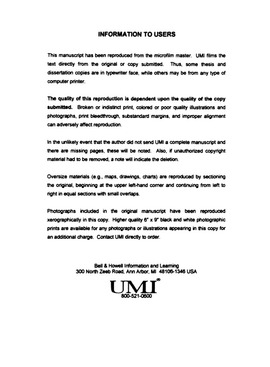| dc.contributor.advisor | Bluestein, Howard B., | en_US |
| dc.contributor.author | Dowell, David Collin. | en_US |
| dc.date.accessioned | 2013-08-16T12:30:47Z | |
| dc.date.available | 2013-08-16T12:30:47Z | |
| dc.date.issued | 2000 | en_US |
| dc.identifier.uri | https://hdl.handle.net/11244/5902 | |
| dc.description.abstract | The goals of this study were twofold. The first was to determine a pseudo-dual-Doppler wind synthesis method in Cartesian coordinates appropriate for the analysis of the ELDORA data. Unique aspects of this part of the study include a comparison of wind synthesis methods based on variational formulations and the use of a non-uniform moving reference frame for the syntheses. A dual-Doppler formulation in which the radial velocity and continuity equations are all satisfied as weak constraints (Gamache 1997, Shapiro and Mewes 1999) yields a more accurate wind field than traditional (and variational) methods in which the radial velocity equations are satisfied exactly. | en_US |
| dc.description.abstract | The second goal of this study was to diagnose both the cyclic process and the formation of individual tornadoes. The McLean storm produced three large tornadoes at 18 min intervals. The last of these then lasted much longer (over one hour) and was stronger than the previous tornadoes. New pre-tornadic vortices formed on the east side of the updraft by tilting of strong environmental low-level horizontal vorticity into the vertical and then stretching of the vertical vorticity within the updraft. The vortices did not mature at low levels until they migrated to the west side of the updraft. Indirect evidence indicates that both baroclinic generation of horizontal vorticity and the rear downdraft may have played roles in tornado formation at this stage. | en_US |
| dc.description.abstract | The tornadic potential of a storm appears-to be related to the relative strength of low-level storm outflow and inflow beneath the west side of updraft. Cyclic tornadogenesis modes may be possible both when the inflow slightly dominates and when the outflow slightly dominates. The description of an inflow-dominated cyclic mode like that observed in the McLean storm is original. Internal cell interactions within the McLean storm appear to have helped the transition from the cyclic phase to a more steady phase. | en_US |
| dc.description.abstract | Several tornadic storms formed in the Texas Panhandle on 8 June 1995, the date of the last mission of VORTEX (Verification of the Origins of Rotation in Tornadoes EXperiment). The southernmost storm in this severe weather outbreak produced a family of at least five tornadoes near the town of McLean. Airborne Doppler radar scans of this storm by the ELDORA (ELectra DOppler RAdar) offer the most detailed look to date at a storm producing a family of tornadoes. | en_US |
| dc.format.extent | viii, 227 leaves : | en_US |
| dc.subject | Physics, Atmospheric Science. | en_US |
| dc.subject | Tornadoes. | en_US |
| dc.subject | Doppler radar. | en_US |
| dc.title | A pseudo-dual-Doppler analysis of cyclic tornadogenesis. | en_US |
| dc.type | Thesis | en_US |
| dc.thesis.degree | Ph.D. | en_US |
| dc.thesis.degreeDiscipline | School of Meteorology | en_US |
| dc.note | Source: Dissertation Abstracts International, Volume: 60-12, Section: B, page: 6157. | en_US |
| dc.note | Adviser: Howard B. Bluestein. | en_US |
| ou.identifier | (UMI)AAI9956999 | en_US |
| ou.group | College of Atmospheric & Geographic Sciences::School of Meteorology | |
